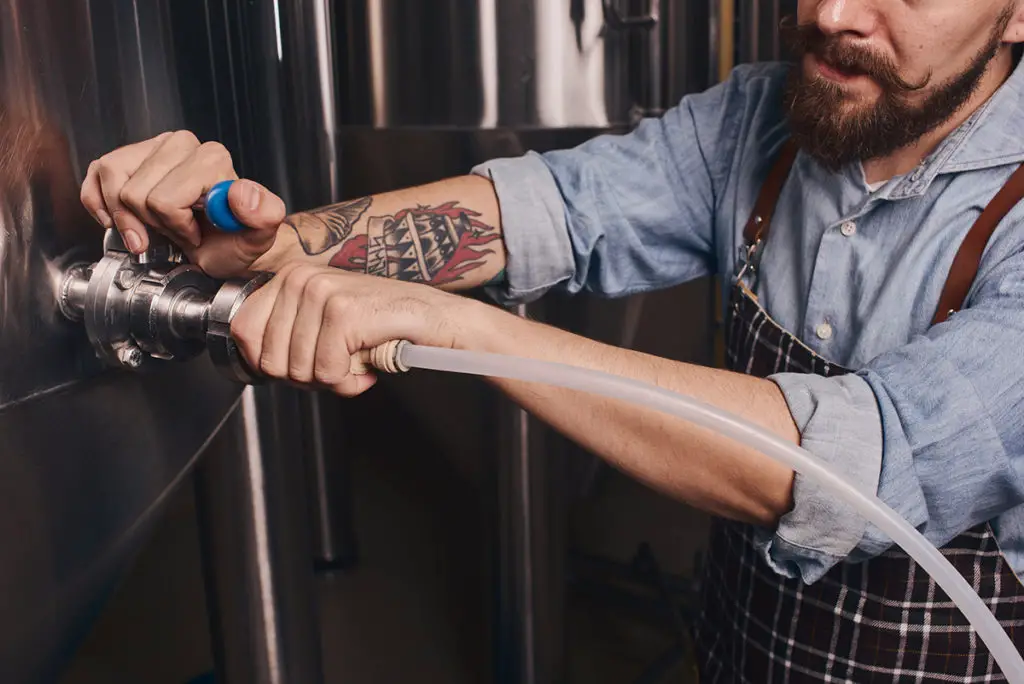Keg taps come in various shapes and sizes, so knowing how to remove or change one properly isn’t always the most straightforward process. While for newer models, you can complete the task with just the press of a button, older versions can require a bit of knowledge and experience.
Here’s how you can remove a keg tap:
- Determine the keg type.
- Turn off the carbon dioxide pressure line.
- Remove the beer line tubing.
- Drain any excess liquid.
- Grab the tap coupler handle and twist counterclockwise.
In the following sections, you’ll learn all there’s to know about successfully removing a keg tap. You’ll also be able to follow along with two informational videos which showcase the whole process visually.
1. Determine the Keg Type
Determining your keg type and tap system is the first and most essential step you’ll take. The reason for this is that the style of your barrel will determine the rest of this process. Depending on the type, the tap-changing procedure can take on many forms, from pushing a button to turning a lever to having to put your toolbox to use.
For example, the models that you’ll see in bars most often come with a pressure dispense beer tap pressurized by carbon dioxide. Party kegs, on the other hand, generally come with a portable hand pump that pushes air into the barrel, as well as multiple keg taps.
Regardless of which specific model you have, you’ll need to know how to remove the tap to clean or replace your keg.

BEER DROP: Boxes of beer from Award-winning microbreweries → Join The Club
In this article, the steps are for a basic keg with a handle-equipped tap in mind. A kegerator generally has a “D” style tap that you can unscrew by using your gas and liquid lines. That said, I’ll also point out optional and alternative steps that you’d need to take into account according to your keg type.
2. Turn Off the Carbon Dioxide Pressure Line
Although this is not always a necessary step with newer models, when removing a keg tap on an older barrel, you need to turn off the CO2 pressure line before continuing with any other steps. So, I suggest erring on the safe side and always going through this process before moving on to removing the beer line tubing.
After you’re done serving, you can proceed to rotate the pressure valve all the way down and turn off the carbon dioxide tank. Then, if possible, try to unscrew the CO regulator from the tank. Afterward, you’ll want to transfer the keg to a cool location in order to continue with the rest of the steps.
3. Remove the Beer Line Tubing
Removing a beer line can often seem confusing and overwhelming. However, it generally is a simple process to learn. You won’t need to use this step if you have a more modern model.
If you have a basic keg, though, you’ll need to remove the beer tap hose either before or after the tap itself. I chose this type of positioning for this step in the tap-removing process because the excess tangled tubes can make the approach a little more inconvenient. Having said that, if you prefer to remove the beer line tubing, later on, it still is a perfectly acceptable solution.
Note: Remember before using the tube again be sure to use some type of beer line cleaner or sanitizer. Cleaning the beer hose will eliminate bacteria from building up and causing potential health or taste problems later on. The last thing you want is to have a delicious craft beer contaminated by a dirty hose.
This tap tubing (or tap hose) is a line made up of two free ends. When using a keg, one of them is attached to a metal spout, and the other is connected to a gap found on the top of the draft tap. Your focus will be the end of the hose attached to the metal sprout, where you’ll find a handle that’s located right under it. Press down with force and turn this handle counterclockwise, which will allow the tube to detach from the keg coupler.
To remove the other end, you’ll need to get your toolbox out. Using a faucet wrench, you’ll loosen the nut used to connect the hose with the opening of the draft tap. Afterward, pull the tubing, and it should be released entirely.
If you also want to detach the metal connectors found on both ends of the beer line tubing, you can do so by using a pair of pliers. Afterward, your hose will be removed appropriately, and you can proceed to the next step.
4. Drain Any Excess Liquid
Before removing the tap, the final action you need to take is to drain out any remaining excess beer or foam found inside your keg. Draining your keg is essential before removing its tap because doing so helps you prevent any possible leakage that can happen. Afterward, you’ll be able to finish off the process.

5. Grab the Tap Handle and Twist Counterclockwise
After preparing your keg in the four previous steps, the tap removing process is as easy as it gets. Locate the handle placed on the side of the tap and pull on it.
Afterward, rotate the mechanism counterclockwise, and the whole thing should come off. You can see how this process is executed here:
If you happen to have a newer keg model, the procedure of removing its tap is even simpler, as you can see in this video:
Locate two buttons found on the side of your tap unit, press on them, and you’ll be able to release the unit from the keg.
At this point, you’ll be able to change your keg without any difficulties. Eventually, you can reassemble the mechanism simply by reversing the steps that you just went through.
Final Thoughts
Removing a keg tap is a straightforward process that requires you to follow five steps. To summarize, after preparing your keg for the tap removal, you can proceed to grab the tap handle, twist counterclockwise, and you’ll be good to go. This approach will work for most basic kegs.
In case you’re working with a newer model, you’ll need to locate two buttons found on the side of the tap unit and push on them. Doing this will release the whole mechanism, allowing you to clean and replace it.
